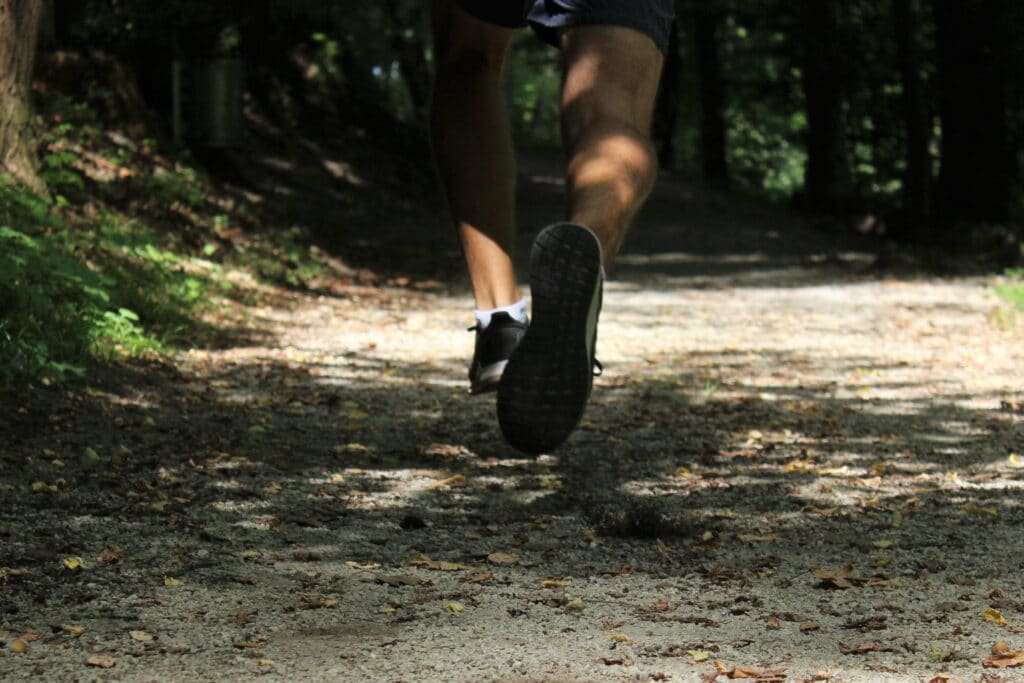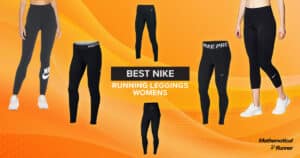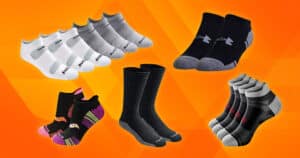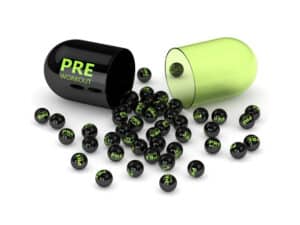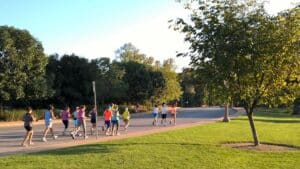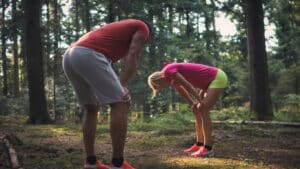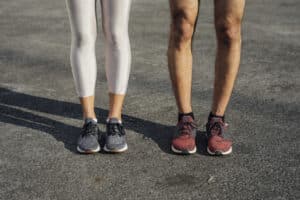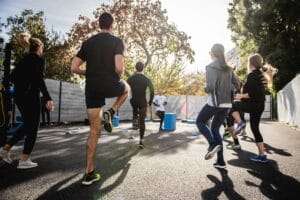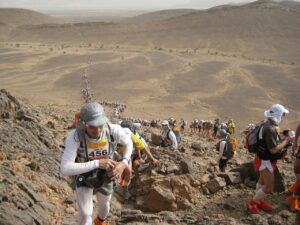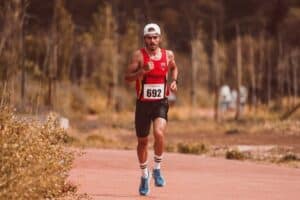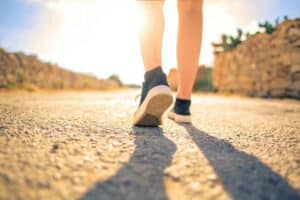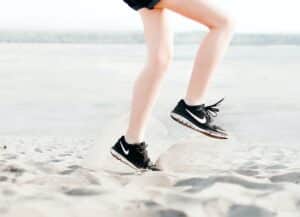Runners with bunion go through a great deal of pain daily. Fortunately for them, there are many ways to relieve bunion pain and here we will discuss some of the best ways for bunion protection for runners.
Wearing your favourite shoes becomes a nightmare with bunions, or you can’t even wear them at all. The tender skin around bunions gets numb when walking or running. It becomes unbearable to walk, run or do any other activity that puts your feet under stress as friction and pressure are exerted on the metatarsophalangeal joint.
Although bunions are permanent, and except for surgery, there is no natural way to remove them. But luckily, there are several treatments and exercises for bunion protection for runners. Treatments such as bunion sleeve, bunion splint, toe spacers and more are common in reducing pain for mild to severe bunions.
Here we will show you how bunion protection for runners is straightforward and painless.
Bunions Are Common
A bunion is a common foot deformity that affects every 1 in 4 persons roughly between 18-65 years of age. Bunions are more common in people who spend more hours in their shoes, either standing, walking, or running. They are also common as it is hereditary and depends on the shape of the feet.
Women who wear narrow shoe and high heels are more likely to develop bunions. High heels tip the body weight and thus push the toes into the tapered toe box. Similarly, the running shoes found on the market also come with a narrow toe box that creates a recipe for bunion formation.
Bunions Are Not Life-Threatening
Although bunions are permanent, they are not life-threatening and affect how you walk. But bunions shouldn’t be left untreated because it could lead to arthritis and deteriorate joint cartilage.
A bunion can be removed by surgical procedures, but arthritis and chronic pain caused by it are not curable. So make sure to see a doctor or podiatrist as early as possible and get your bunions treated as they respond well to early treatments.
Does Running Cause Bunions?
The answer is “NO” running doesn’t cause bunions. Most runners have bunions because they are genetically predisposed to it, contrary to the belief that running causes this foot deformity. There are many reasons due to which bunions develop, some of which are:
Low Arches of your feet tips your body weight onto the toes, and this repeated stress develops bunions.
Flat Feet causes overpronation, and you have to constantly adjust the way you walk; thus, people with flat feet are at risk of developing bunions.
Genetics also plays a role in bunion development because some foot shapes are predisposed to have bunions either way.
Spending long hours in shoes is also an underlying cause of bunions.
Loose Joints and Weak Foot Muscles also cause bunions because the arch collapses due to it, which affects the way you walk and balance your body weight.
Narrow Footwear and high heels press the toes into one another leading to bunion development.
So running might not be the cause of bunion formation, but it can deteriorate existing bunions. A running shoe is often designed with a narrow toe box and higher shoe drop. The repeated stress on the foot due to running in these types of shoes puts an unbearable load on the affected toes, and friction inside the shoe causes immense pain, swelling, numbness and restricted foot movements.
Bunion Protection For Runners
Whether you are a long distance runner or are beginning your journey as one, protection against bunions is essential. It is extremely painful to run with bunions, and if not taken care of, the chronic bunion pain and restricted movements will eventually halt your running routine.
So the bunion protection for runners requires prevention in the first case scenario. Reducing the friction and correcting the toe alignment comes later when bunions are already formed. If these treatments don’t work, the last option is to remove the painful bunion through surgery. Let’s get into the details of bunion protection for runners.
Preventive Measures Against Bunions
Runners can prevent bunions from forming unless there is a genetic predisposition looming overhead. There are two ways in which runners can prevent bunions from forming, which are as follows.
Using Shoes With ‘Zero Drop’
Runners should avoid shoes that have a more significant drop and go for zero drop shoes. The shoe drop is the difference between the height of the heel and forefoot area of the shoe. This way, a zero drop shoe doesn’t put pressure on the front of your foot and instead distributes it. Similarly, the flexible soles also provide greater mobility and provide sound footedness and increase muscle strength in the foot.
Wear Proper Fitted Shoes
To prevent bunions from developing, it should be taken into account that wearing proper fitting shoes just for running is not enough. Wearing adequately fitted everyday shoes is as important as running shoes, and it should be made a habit.
Bunion Protectors
When bunions are already formed there is no need to be panicked as there are ways to protect them while running. The non-invasive treatment to correct the toe alignment is by using bunion correctors. The toe is straightened and brought back to its natural position. Though it is not proven through studies that these protectors permanently correct the toe alignment, they are known to have reduced pain in many cases. Bunion Splints, Sleeves, and toe spacers are better known as bunion protectors.
Bunion Splint

Bunion splints are used for toe alignment and are wrapped around the feet. It is usually worn at night as many bunion splints don’t fit running shoes. The bunion splint keeps the toe straight and supports it from the side. It is important to remember that bunion splints will not correct your foot deformity permanently but will provide temporary protection for runners with bunions to reduce pain. And that being said, it is a harmless and non-invasive treatment without any side effects.
Bunion Sleeve

The bunion sleeve covers the affected area of your foot and cushions it. It protects the bunion from friction inside the shoe that causes irritation and swelling. For those runners with bunions who happen to have arthritis in their big toe can also benefit from this sleeve. As the constant movement of the joint increases pain, the bunion sleeve protects it from painful movements. So, for those runners who can’t let go of their favorite running shoe can benefit from the sleeve and protect their bunions.
Toe Spacers

The toe spacer is another treatment to protect bunions. It is made of soft materials and placed between the big toe and second toe. Once placed into position, it straightens the big toe away from the second toe into its natural position and also prevents them from rubbing. Runners with bunions can benefit from toe spacers because they can be worn inside their running shoes.
Avoid Going Barefoot
Going barefoot is as dangerous as running or walking in narrow shoes. It doesn’t help either in bunion prevention or helps in pain reduction. There is no arch support while you are barefooted, and that ends up in overpronation of the foot, which is a cause of bunion formation.
Taping The Bunion
Taping the bunion can also protect bunions while running. It is made from neoprene, moleskin, silicone, or gel filled plastic. Once applied, it takes pressure applied to the affected area. It can prevent pain and can be used with running shoes.
Strengthening Exercises
Runners with bunions should make a routine of strengthening exercises for their foot muscles. This will help in balanced walking or running and relieve bunion pain. There are various exercises that can prove fruitful such as single leg calf raises, toe extensor, big toe adductor, shin release with a ball and many more.
Right Fitting Shoes
If you are running in the wrong fitted shoes, you are further aggravating your bunions. Changing narrow shoes are essential for bunion protection for runners. When choosing best running shoe for bunion protection, here are some things to remember.
Wide fitting shoes provide more comfort and protection for runners with bunions. There is more space for the bunion, and toes are not squished together.
Flexible and soft running shoes are perfect for foot support and protect the bunion from chaffing inside the shoe.
Zero drop shoes take off pressure from the forefoot and protect the bunion from hurting while running and walking.
The Perfect Knot
Who would have given a second thought when tying the shoelaces can also affect bunions. If you are a runner with bunions, try the knotting technique in which you have to skip the first eyelet on the side of the affected toe. This method will ease the stress from the bunion and help protect against discomfort.
Conclusion
Although bunions are a permanent foot deformity, they shouldn’t stop you from running. Here we have mentioned some ways for bunion protection for runners which can be adapted to overcome painful bunions. After all, these are simple changes that can make a massive difference in bunion protection and having a comfortable running experience.

